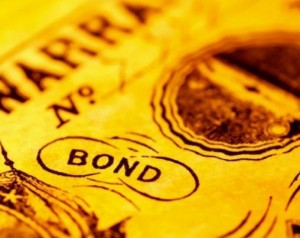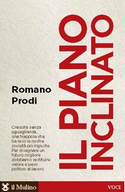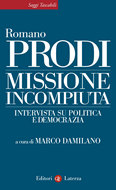Euro Union Bonds: Why Are We Proposing Them Again?
 Euro Union Bonds: Why Are We Proposing Them Again?
Euro Union Bonds: Why Are We Proposing Them Again?
By Romano Prodi and Alberto Quadrio Curzio on Il Sole 24 Ore (english version) of August 23, 2012
The crisis in the euro zone continues, because of the weakness of some countries (Portugal, Ireland, Greece and Spain, the so-called PIGS) combined with as the strength of others (Germany) and also near zero growth. Not even Italy is out of the crisis yet, although it is no longer perceived as being at the center of it. The recession and interest rates on 10-year-yield national bonds of around 5.5 percent (plus a spread with German bonds’ rates oscillating between 400 and 450 base points) nullify the sacrifices that have brought our primary surplus to about 4 percent. This is why we cannot seem to reduce our public debt, over which now hang many proposals, including the sale of public assets.
These proposals do not convince the Finnish premier, who heads an extremely rigor-oriented country. In his recent meeting with Prime Minister Mario Monti, he expressed skepticism about the sales at current market prices and suggested the use of public assets as collateral on the emissions of national bonds (Italian and Spanish ones) to lower their interest rate. This idea is similar to the one we proposed in this publication one year ago, in an article entitled “Euro Union Bonds for the New Europe,”
But we did not propose real collateral for the emissions of a single country (let alone the possibility for a country of the European Economic and Monetary Union [EMU] to ask another EMU country for warranties in order to lend money to it), but rather for the emission of euro union bonds (EUBs), aimed at the stability and growth of the entire euro zone.
The Many Kinds of Euro Bonds
Many proposals have been made regarding euro bonds (as A. Quadrio Curzio writes in the December 2011 issue of Economia Politica, in an article entitled “The Different Types of Eurobonds”), with many different goals: to stop the financial crisis in its tracks, secure the public debts of Economic and Monetary Union Countries (EMUCs), start an ample and liquid euro zone bond market, favor and stimulate growth. For now, however, the only emissions hstate saving fund, or European Financial Stability Facility (EFSF).
Thus we again propose euro union bonds, aimed at unifying all of the objectives. We are also encouraged to relaunch them because at least one type of stability bond contained in the green paper issued by the European Commission in November 2011 (in which our August 2011 contribution is included) features various similarities with our EUBs. Moreover, we think the current state saving funds could become, after a few modifications, the EUB-issuing institution.
Euro Union Bonds of the European Financial Fund
Our 2011 proposal was basically structured as follows: a European Financial Fund (EFF) equipped with capital, made up of real assets (gold reserves, stocks of infrastructural network companies) supplied by EMUCs proportionally to their capital in the European Central Bank (ECB), re-proportioned at 100, excluding the non-EMU countries. Our hypothesis was based on capital of 1 trillion euros for the emissions with a lever 3 of 3 trillion in long-term EUBs at an average rate of 3 percent and, consequently, with a yearly interest impact equal to 1 percent of the EMU’s GDP in 2011. We also provided two kinds of allocations for the financial resources harvested in this way: 2.3 trillion euros toward relieving part of the EMUC’s public debts, equal to 25 percent of their respective debt/GDP ratio, and 700 billion for infrastructural investments.
The Italian debt/GDP ratio toward the market would drop to 95 percent, and this would make speculation harder by bringing about a rate reduction, as that 25 percent held by the EFF would be negotiated at realistic rates and carried to maturity. On the other hand, the infrastructure investments would allow unification and powering of the networks, therefore pushing and facilitating growth.
Let Us Clarify Three More Aspects of Our Proposal
One issue regards whether or not to separate euro bonds used to mutualize part of the debts from those used for investments. EUBs unify the two kinds, because investments to integrate infrastructure networks in the EMU (both material and immaterial, like research and development) would strengthen the EFF and increase both its real content and its income-earning potential. Consolidated in the EFF, the real warranties are worth more than they are when divided among the EMUCs. The same is true for unified investments.
Another issue pertains to the “incentive to indebtment” that less virtuous EMUCs would receive from the decrease in their public debt vis-à-vis the market. In order to prevent this, we proposed to consider the votes within the EFF inversely to the excess debt/GDP ratio of every country. The mechanism could be made harsher still by providing for further transfers of real capital to the EFF, without any increase in the participation quotas from countries that let their debt/GDP ratio grow.
The third issue concerns the EFF’s possible recapitalization necessities. These should always consist of proportional transfers from EMUCs—in real capital rather than nominal warranties.
What Is New About the State-Saving Funds (EFSF and ESM)?
The inauguration of EFF can now benefit from experience by the EFSF after it has issued “rescue bonds” to support Greece, Ireland, Portugal and, soon, Spain.
The EFSF is no small fund. It has a capital of 780 billion euros granted by the EMUCs with the following quotas: Germany (27.06 percent), France (20.31 percent), Italy (17.86 percent), Spain (11.87 percent). In total, these countries grant 77.1 percent of the overall fund’s capital. Italy is involved for 139 billion euros, which weighs on our public debt as rescue bonds are issued. Thus we are not among the “supported”; we actually qualify as “supporters”!
After a slow start in 2011, the fund has intensified its bond emissions in 2012: long-term ones (ranging from 1 to 25 years), short term (from three to six months) direct releases of rescue bonds for restructuring and even privates of the Greek debt. In total, including Spain, 300 billion euros are already allocated and, out of the allowed 440 billion, 140 billion are still usable. The fund demonstrated the existence of a strong demand, at great market conditions, for bonds issued unitarily by the euro zone.
In fact rescue bonds have always had a demand larger than their supply and interest that for short-term bonds went from a negative minimum to a maximum of 0.266 percent, and for the long-term ones from a minimum of 0.335 percent (1 year) to a maximum of 3.875 percent (20 years) and of 3.375 (25 years). The geographical contours of the demand shows a strong European and Asian component (which sometimes exceeds 90 percent), while the investor-description chart shows central banks, sovereign funds and governments at around 40 percent of the total. These are important results, considering that the EFSF is a private society from Luxembourg with a limited lifetime; that the capital is not deposited, only granted; and that the EMU could always break up.
The EFSF has been a good test of euro bonds’ issuing potential, and the European Stability Mechanism fund (ESM), which will replace it in July 2013, has even greater potential, given that it is a permanent fund, classified as a financial international organization. The ESM will have underwritten capital of 700 billion euros, of which 80 billion must be deposited and the rest granted by EMUCs, with a lending capacity of 500 billion.
In the new EMS fund, Germany must pitch in with 190 billion euros, France almost 143 billion, Italy for about 143 billion—in total, 65 percent of the overall capital. These are large amounts if they were to be deposited, even if over time. Italy (but not only Italy) would have enormous difficulty. The only way around that is if it were allowed to deposit the capital through our gold reserves (now worth about 100 billion euros) while using other assets for the remaining 25 billion. In the recent Astrid’s proposal for public-debt reduction, estimates show that at least 150 billion to 200 billion euros in public assets could be sold by the year 2017. Thus, enough Italian capital to does exist.
Why and How Italy Can Change Strategy in the EMU
The main limit of these funds is that they are used only for rescue operations, while they should be transformed into funds for growth and stability. That is why Italy should change its strategy within the EMU by explaining to Germany—in harsh tones if necessary—that EUBs with real warranties would not burden it with other countries’ debts (even if they would take away the privilege of financing itself at negative rates!) and that, from an industrial standpoint, it would greatly benefit by the revival of growth. Equipped with one of the largest public-assets portfolios in the EMU, Italy should raise the stakes by asking the EMUCs for a modification of the treaty on the ESM fund by demanding that all countries deposit the required capital in real assets, estimated by common and unified assessment procedures.
The deposits we have proposed for the EFF to issue EUBs are realistic and would allow the transition from the rescue actions by state-saving funds to a strategy of EMU economic revival. In Italy’s case, transfering 25 percent of our debt/GDP ratio to the EFF and letting the ratio toward the market decrease to less than 100 percent would allow the country to finance its debt at interest rates much lower than the current ones, with the possibility of reducing it rapidly, due to the primary surplus. European investments of 1 trillion euros would give everyone a great push toward growth with a consequent compression effect of the debt/GDP ratio.
The intention of the Italian government of “making it on its own” (seen by many as a defense of a pre- or anti-Europe national sovereignty) will not solve much and could even “justify” the absence of European anti-spread interventions. Between the recession and high interest rates we run the risk of nullifying the sacrifices we have made so far, while our public patrimony, used both in innovative ways and in a situation of equality with all the other EMUCs, would greatly contribute to the stability and growth of the euro zone.
The alternative would be for the ECB to become the lender of last resort without distinctions. But even in this case the EMU could not survive without a public-debt-bond-issuing federal fund. Just the way it happens in the USA or, in other words, in any federal democracy.






















